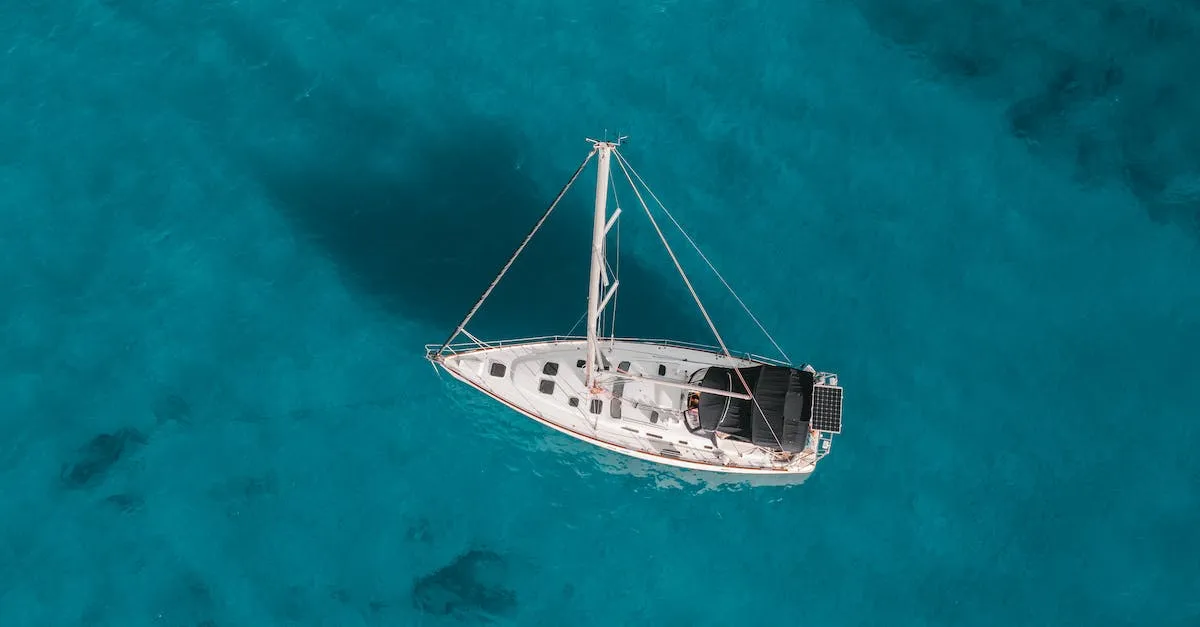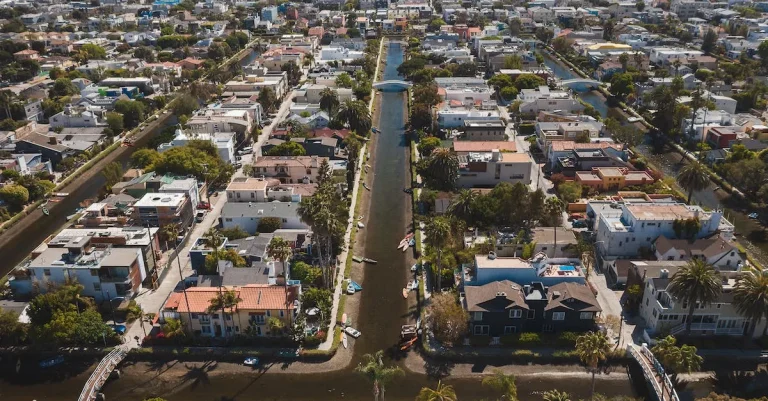Is It Dangerous To Sail From California To Hawaii?
With its tropical climate and pristine beaches, Hawaii is an alluring destination for sailors along the U.S. West Coast. But making the crossing from California involves navigating over 2,000 miles of open ocean, leaving many to wonder: is it dangerous to sail to Hawaii?
If you’re short on time, here’s a quick answer to your question: Sailing from California to Hawaii can be dangerous due to the long distance over open ocean, potential for extreme weather, and remoteness from help if problems arise. With proper planning, boat preparation, supplies, and precautions, the passage can be made safely.
Distance and Remoteness
Sailing from California to Hawaii is no small feat. With over 2,000 miles of open ocean between the two destinations, it is a journey that requires careful planning, preparation, and navigation skills.
The vast distance can present a number of challenges for sailors, making it important to understand the risks involved.
Over 2,000 Miles of Open Ocean
The distance between California and Hawaii is approximately 2,400 nautical miles, depending on the specific starting and ending points. This means that sailors will be traveling across a vast expanse of open ocean, far from the sight of land for days or even weeks.
The journey can be physically and mentally demanding, requiring endurance, resilience, and the ability to adapt to changing weather conditions.
During this long passage, sailors may encounter strong winds, rough seas, and unpredictable weather patterns. It is crucial for sailors to have a solid understanding of navigation techniques, weather forecasting, and emergency protocols to ensure a safe and successful voyage.
Did you know? The fastest recorded time for sailing from California to Hawaii is 4 days, 11 hours, and 10 minutes. This impressive feat was achieved by the crew of the trimaran Lending Club 2 in 2015.
Far from Help or Rescue
One of the key considerations when sailing from California to Hawaii is the remoteness of the route. Once sailors embark on this journey, they will be far from the reach of immediate help or rescue. In case of any emergencies or unforeseen circumstances, it may take a significant amount of time for assistance to arrive.
It is important for sailors to be self-sufficient and equipped with the necessary supplies, including food, water, medical kits, and communication devices. They should also have a well-thought-out emergency plan in place, which may include satellite communication systems or emergency beacons to alert authorities if needed.
Important to note: The United States Coast Guard recommends that sailors file a float plan before embarking on any long-distance voyage. This document includes important information about the vessel, its crew, and the intended route, which can be crucial in case of an emergency.
Sailing from California to Hawaii can be an incredible adventure, but it is not without its risks. By understanding the distance and remoteness of the journey, sailors can adequately prepare themselves and ensure a safe and enjoyable passage.
Weather and Sea Conditions
When considering sailing from California to Hawaii, it is important to take into account the weather and sea conditions you may encounter along the way. The Pacific Ocean can be unpredictable, and it is crucial to be well-informed and prepared for the potential challenges that may arise.
Storms and High Winds
One of the main concerns when sailing from California to Hawaii is the possibility of encountering storms and high winds. The Pacific Ocean is known for its powerful weather systems, including tropical storms and hurricanes.
While these weather phenomena can be dangerous, it is essential to note that they are typically well-monitored and forecasted by the National Weather Service and other meteorological organizations.
Before embarking on your journey, it is crucial to check weather reports and consult with experienced sailors or meteorologists. They can provide valuable insights on the best time to set sail and help you plan your route to avoid the most severe weather conditions.
It is also recommended to have a reliable communication system on board to stay informed about any weather updates or warnings.
Large Waves
Another factor to consider when sailing from California to Hawaii is the presence of large waves in the Pacific Ocean. The region is known for its swells and powerful surf, which can create challenging conditions for sailors.
It is crucial to have a seaworthy vessel and be experienced in handling rough seas.
It is advisable to monitor wave forecasts and choose a departure date that minimizes the risk of encountering extreme wave conditions. Additionally, having a well-equipped boat with proper safety gear, including life jackets and harnesses, can provide added security in case of unexpected wave activity.
While sailing from California to Hawaii can be a thrilling adventure, it is vital to respect the power of the ocean and make informed decisions based on weather and sea conditions. By taking precautions and being prepared, sailors can minimize the risks associated with this journey and enjoy a safe and enjoyable passage to the beautiful Hawaiian Islands.
Vessel Preparation
Seaworthiness
Before embarking on a journey from California to Hawaii, it is crucial to ensure that the vessel is in a seaworthy condition. This means that the boat should be well-maintained and capable of withstanding the challenges of the open ocean.
It is recommended to have a professional marine surveyor assess the boat’s hull, rigging, engine, and safety equipment to ensure everything is in good working order. Regular maintenance and inspections are essential to address any potential issues before they become major problems.
In addition to the physical condition of the vessel, sailors should also consider the experience and skill level of the crew. Sailing in open waters requires knowledge of navigation, weather patterns, and emergency procedures.
It is advisable to have a crew with adequate training and experience to handle any unforeseen circumstances that may arise during the journey.
Sufficient Fuel and Supplies
Another crucial aspect of vessel preparation is ensuring that there is enough fuel and supplies for the entire journey. The distance between California and Hawaii is approximately 2,400 nautical miles, which can take several weeks depending on the wind and weather conditions.
Sailors should calculate their fuel consumption and carry extra fuel to account for any unexpected delays or changes in the wind patterns.
It is also important to have an ample supply of provisions, including food, water, and medical supplies. This is especially vital when sailing long distances where access to resources may be limited. Sailors should carefully plan and stock up on non-perishable food items, fresh water, and necessary medications.
Additionally, having a reliable watermaker or desalination system on board can provide a sustainable source of drinking water during the journey.
For more information on vessel preparation and seaworthiness, you can visit the website of the United States Coast Guard at https://www.uscg.mil/. They provide comprehensive guidelines and safety recommendations for boaters.
Crew Experience
Sailing from California to Hawaii can be a thrilling adventure, but it is important for the crew to have the necessary experience to handle the challenges that may arise during the journey. The crew should possess strong navigation skills and be able to navigate using charts, compasses, and GPS systems.
Familiarity with ocean currents, weather patterns, and celestial navigation can also be beneficial.
Navigation Skills
Navigation skills are crucial when sailing from California to Hawaii, as it involves crossing a vast expanse of the Pacific Ocean. The crew should be proficient in using navigational tools and be able to plot courses, determine positions, and calculate distances accurately.
They should also be knowledgeable about prevailing winds and currents, as these can greatly affect the route and speed of the journey.
It is recommended for crew members to undergo training courses or gain experience in long-distance sailing before attempting the California-Hawaii voyage. This will help them develop the necessary skills and confidence to navigate safely and efficiently.
Contingency Plans
When embarking on a long-distance sailing trip, it is essential to have contingency plans in place. Unforeseen circumstances such as adverse weather conditions, equipment failures, or medical emergencies can arise, and the crew should be prepared to handle them effectively.
One important aspect of contingency planning is to have backup navigation systems on board, such as extra GPS devices, charts, and compasses. This ensures that even if one system fails, the crew can still navigate their way to their destination.
Additionally, it is advisable to have regular check-ins with a shoreside support team or use satellite communication devices to keep in touch with land-based resources. This allows for assistance or guidance in case of any emergencies.
Having a well-stocked medical kit and crew members trained in basic first aid is also crucial. In the event of any medical emergencies, the crew should be able to provide immediate care until professional help can be obtained.
By having thorough contingency plans in place, the crew can mitigate risks and navigate the journey safely, ensuring a successful and enjoyable passage from California to Hawaii.
Safety Gear
Emergency Communications
When embarking on a sailing trip from California to Hawaii, it is crucial to have reliable emergency communication devices on board. These devices can be the difference between life and death in case of an emergency situation.
One of the most commonly used devices is a VHF radio, which allows sailors to communicate with the coast guard and other vessels in the vicinity. Additionally, having a satellite phone as a backup can provide a reliable means of communication when out of range of traditional cell phone networks.
In terms of emergency beacons, an EPIRB (Emergency Position-Indicating Radio Beacon) is a must-have item. This device can be activated in the event of an emergency and will transmit a distress signal to satellites, notifying authorities of your location.
It is important to ensure that the EPIRB is registered and properly maintained to ensure its effectiveness.
Furthermore, having a reliable GPS system onboard is essential for navigation and emergency situations. GPS can provide accurate location information, making it easier for search and rescue teams to locate a vessel in distress.
It is recommended to have a backup GPS device in case of a malfunction or loss of power.
Life Raft
A life raft is an indispensable piece of safety gear for any long-distance sailing journey. In the unlikely event of a catastrophic event such as a sinking or fire, a life raft can provide a safe haven for the crew until rescue arrives.
When choosing a life raft, it is important to consider factors such as capacity, durability, and ease of deployment.
Life rafts should be equipped with essential supplies such as fresh water, food rations, flares, a first aid kit, and signaling devices. Regular maintenance and inspection of the life raft are crucial to ensure it is in good working condition.
Additionally, crew members should be trained on how to properly deploy and use the life raft in case of an emergency.
It is worth noting that life rafts are designed to be used as a last resort and should not replace proper precautions and safety measures. Regular safety drills, the use of personal flotation devices, and keeping a vigilant watch are all essential elements of a safe sailing journey.
Conclusion
For capable sailors on a sound vessel, sailing from California to Hawaii can be done safely with careful preparation and planning. But undertakings of this magnitude still involve appreciable risks that each crew must evaluate.
By assessing the dangers posed by the distance, weather, and remoteness – and taking steps to prepare accordingly – sailors can mitigate the hazards involved in this offshore passage. While not without challenges, the right planning and precautions makes sailing to Hawaii an achievable adventure for many West Coast boaters.








